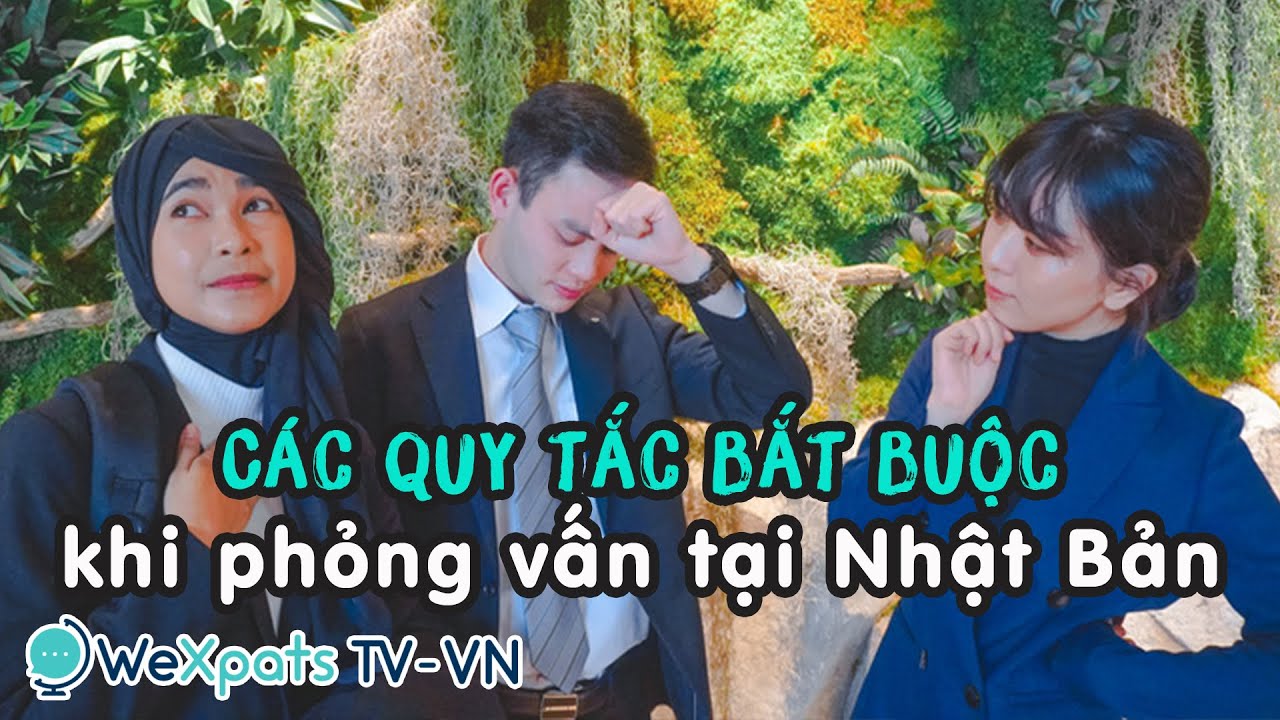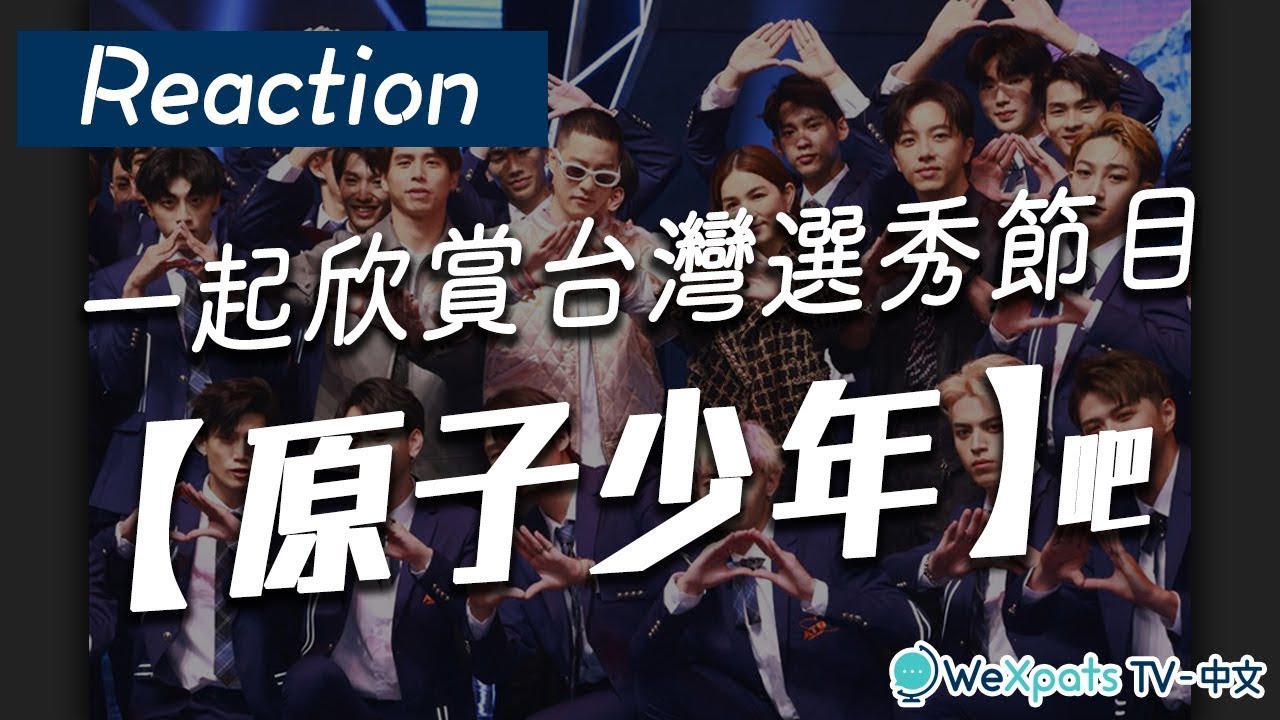Ever confused about the Japanese calendar? We try to sum up everything from the fiscal year in Japan, public holidays, the era naming system, as well as the cultural background that affects the Japanese calendar even today.
Table of Contents
- The Basics of the Japanese Calendar
- Public Holidays in Japan
- Gengo (Nengo): Japanese Calendar Years
- Other Interesting Japanese Calendar Customs
- To Close
The Basics of the Japanese Calendar

Here, we quickly go through what calendar system Japan uses, as well as when the fiscal year starts and ends in Japan. Also find out how to say the months and days of the week in Japanese.
Calendar System & Fiscal Year
The Japanese calendar follows the Gregorian calendar like most of the world. Japan began to use it during the Meiji Era in 1973. Before that, they used the Lunar Calendar, but instead of keeping the Lunar New Year like other Asian countries, Japan decided to simply move the Lunar New Year traditions to January 1.
However, the fiscal year (government) is from April to March with 4 three-month terms: April to June, July to September, October to December, and January to March. The new school and work year therefore starts in April. However, companies are free to decide their own fiscal year, so some follow the government designated fiscal year, and others follow the calendar year.
Thus it’s important to know what follows the calendar system, and what follows the fiscal year. Individual taxes, for example, are for the calendar year and not the fiscal year.
Fun fact: Leap Year is called 「うるう年 uruudoshi」and Leap Day is called 「うるう日 uruubi」or sometimes「閏日 jyunjitsu」.
Months of the Year in Japanese
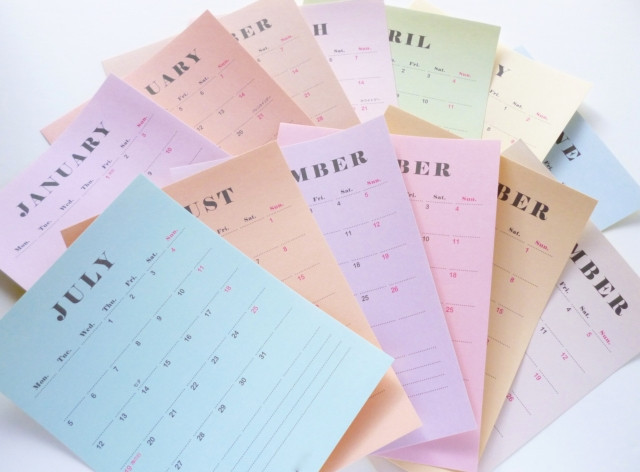
Japanese months are easy if you know how to count in Japanese!
|
Month |
Japanese Name |
|
January |
1月 (Ichigatsu) |
|
February |
2月 (Nigatsu) |
|
March |
3月 (Sangatsu) |
|
April |
4月 (Shigatsu) |
|
May |
5月 (Gogatsu) |
|
June |
6月 (Rokugatsu) |
|
July |
7月 (Shichigatsu) |
|
August |
8月 (Hachigatsu) |
|
September |
9月 (Kugatsu) |
|
October |
10月 (Jyuugatsu) |
|
November |
11月 (Jyuuichigatsu) |
|
December |
12月 (Jyuunigatsu) |
Days of the Week in Japanese
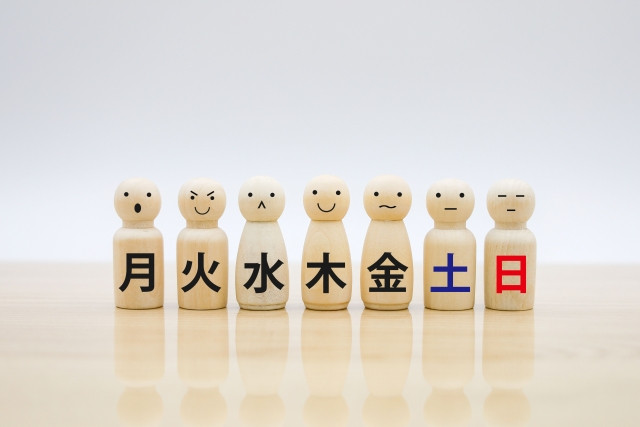
The names follow the planets as well as elements.
|
Day of the Week |
Japanese Name |
Planet/Element |
|
Sunday |
日曜日 (Nichiyoubi) |
Sun |
|
Monday |
月曜日 (Getsuyoubi) |
Moon |
|
Tuesday |
火曜日 (Kayoubi) |
Mars, fire |
|
Wednesday |
水曜日 (Suiyoubi) |
Mercury, water |
|
Thursday |
木曜日 (Mokuyoubi) |
Jupiter, wood |
|
Friday |
金曜日 (Kinyoubi) |
Venus, gold |
|
Saturday |
土曜日 (Doyoubi) |
Saturn, soil/earth |
Writer's Pick
Public Holidays in Japan

Public holidays in Japan are called 「祝日 shukujitsu」. There are currently 16 public holidays recognized by the government in Japan.
|
January 1 |
New Year's Day |
|
The second Monday in January |
Coming of Age Day |
|
February 11 |
National Founding Day |
|
February 23 |
Emperor's Birthday |
|
March 20 or 21 |
Vernal Equinox Day |
|
April 29 |
Showa Day |
|
May 3 |
Constitution Memorial Day |
|
May 4 |
Greenery Day |
|
May 5 |
Children's Day |
|
The third Monday in July |
Marine Day or Ocean Day |
|
August 11 |
Mountain Day |
|
The third Monday in September |
Respect-for-the-Aged Day |
|
September 23 or 24 |
Autumnal Equinox Day |
|
The second Monday in October |
Sports Day |
|
November 3 |
Culture Day |
|
November 23 |
Labor Thanksgiving Day |
※内閣府, “国民の祝日"
If a public holiday falls on a Sunday, which is already a day off for most of the working class and students, it is expected that the following Monday will be a holiday. This is called 「振替休日 furikae kyujitsu」or a day off in exchange for the public holiday on Sunday.
Religious holidays are called 「祭日 saijitsu」. Some of them used to be public holidays at one point in Japan’s history, but are no longer. A celebration, most often a ritual or a “matsuri” (festival) may be held, often in temples and shrines. And an event like Christmas or Valentine’s Day, which are celebrated in Japan but not a day off from work or school, is called a 「行事 gyoji」.
The Emperor’s Birthday is a public holiday in Japan. Should he pass away, the holiday will change to the next emperor’s birthday. Some of the public holidays we celebrate today are dedicated to former emperors and their birthdays.
Longer Holidays in Japan
There are three notable holidays in Japan where the cluster of holidays allows people to have a longer time off, even up to a week if combined with paid vacation days. People often travel and go back to their hometowns during this period. However, it should be noted that prices for traveling and accommodation go up during this time.
New Year’s Holiday
Officially celebrated during the first three days of January, Japan’s New Year’s holiday is a big deal. Most businesses close from 3 days prior (so around December 29), making the break a minimum of 6 days. Many people will go back to their hometowns, exchange New Year’s greetings such as through 「年賀状 nengajo」or New Year’s Cards, eat special foods, and visit shrines and temples to pray for good fortune in the new year.
Golden Week
A celebration with three consecutive national holidays in the beginning of May. Many people are able to take about a week-long vacation away from work when combined with the weekend and paid vacation days. Golden Week includes Children’s Day (May 5) festivities, as well as Greenery Day (May 4), so many people, especially families, visit parks and zoos, go hiking, etc.
Read more about it here: Golden Week, Saving Grace for Japan’s Working Class
Obon
A Buddhist festival period in mid-August. It’s a time to honor your ancestors by visiting their graves, which often means going back to your hometown. Even though it’s not a public holiday, many businesses will give time off during this period. Many employees take additional days off and combine it with Mountain Day (August 11) if the dates are close enough to try to schedule a longer vacation. Additional festivities include going to summer festivals, fireworks shows, doing bon-odori (traditional dance), and so on.
Gengo (Nengo): Japanese Calendar Years
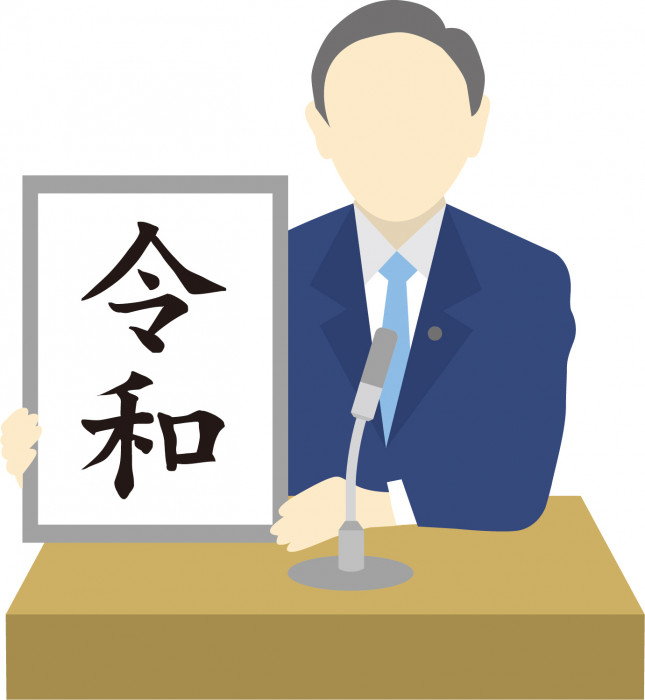
In Japan, you may hear a different way to refer to the year other than the typical 4 digit calendar year.
You may have heard them called “(name) era/period” in English.
This is called 「元号 gengo」 or sometimes 「年号 nengo」. (They have the same meaning and are interchangeable.) One of the iconic moments of 2019 was when the new gengo name, Reiwa, was announced.
Note: The 4 digit calendar year (such as 2022) is referred to as 「西暦 seireki」which means A.D.
If you see「西暦 seireki」or even just 「西」 on a form by the date, such as when filling out your birthday or today's date, you can write the year with 4 digits. If you see kanji characters like 「昭」「平」「令」, you have to circle the one that applies and think about what gengo year it is. For example, if your birthday is in 1990, you have to circle 「平」and write 2 for the year, as 1990 is 「平成2年 Heisei 2」or the second year of the Heisei Era.
Thus in Japan, it's important to at least know the gengo year of your own birthday, as well as the current year's gengo. (More on the current year below!)
Gengo Names
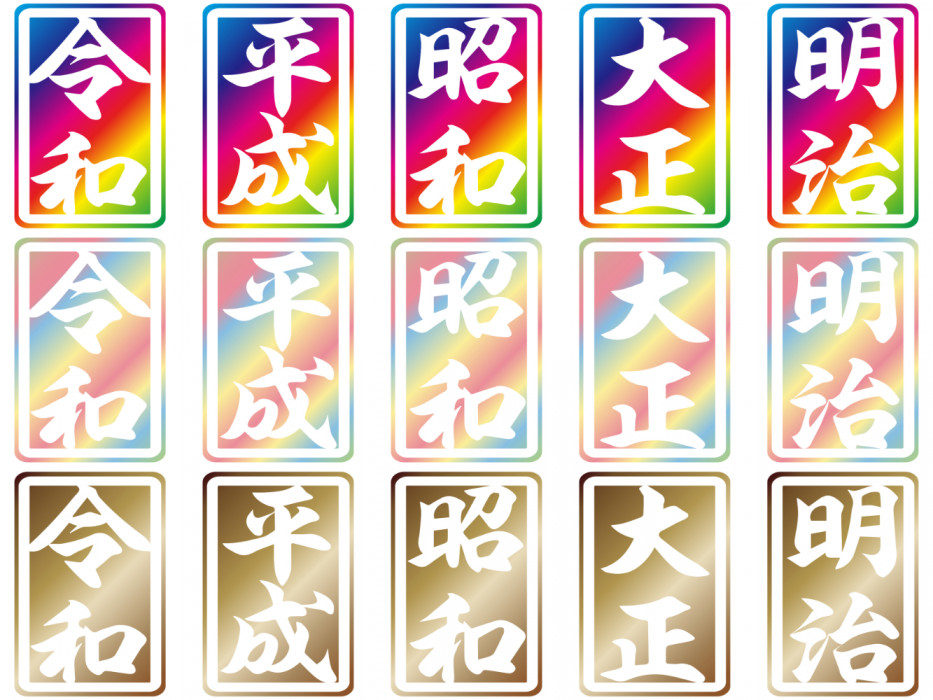
The different gengo names currently correlate to when a certain emperor ruled Japan, and the number following it is the year of their rule. In the past, the gengo name would change more frequently for a variety of reasons, including when an important event or a natural disaster happened.
At present, a new gengo starts when the new emperor rises to his throne (no matter what month of the year) and the first year of that gengo goes until the end of that calendar year. For example, Reiwa 1 (Reiwa Gannen) was from May 1, 2019 to December 31, 2019. After that, the gengo will follow the calendar years until the death of the emperor, or as in the case of the most recent gengo change, abdication.
The era names are chosen very carefully. Some of the criteria for the name include that it should evoke an image of hope for the people of Japan, be two kanji characters, be easy to read and write, not have been used before, etc.
The current system of changing the name when a new emperor takes the throne started in the Meiji period. Here are the gengo names since then.
|
Gengo Name |
Years |
|
明治 Meiji |
1868 - 1912 |
|
大正 Taisho |
1912 - 1926 |
|
昭和 Showa |
1926 - 1989 |
|
平成 Heisei |
1989 - 2019.04 |
|
令和 Reiwa |
2019.05~ |
Thus 1868 is Meiji 1 while 1912 is Taisho 1, etc. The first year of the gengo is also called 「元年 gannen」 instead of 1; for example instead of Taisho 1, it is called Taisho Gannen.
Japanese Calendar Year Conversion: Heisei and Reiwa
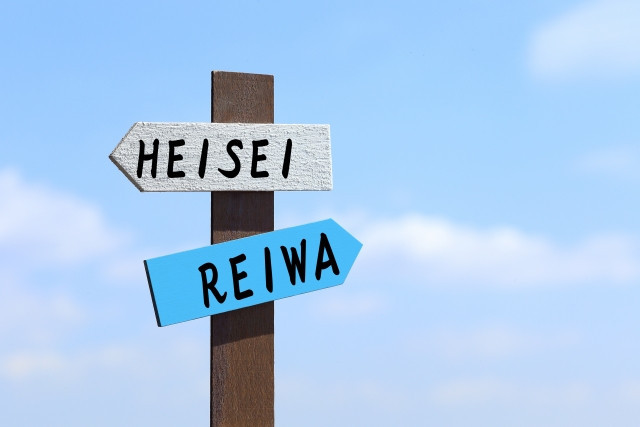
Let’s take a look at Heisei and Reiwa in particular. The Heisei period began in the late 1980s, one day after Emperor Hirohito passed away due to cancer. His successor, Emperor Akihito took the throne as the 125th Emperor of Japan in accordance with Japanese tradition. Heisei in English translates to “peace everywhere” which was taken from two Chinese and Philosophy books, the Records of the Grand Historian and the Book of Documents respectively.
To give you an example, below is the conversion from the calendar year to Heisei years.
|
Calendar Year |
Heisei Year |
|
1989 |
Heisei 1 |
|
1990 |
Heisei 2 |
|
1991 |
Heisei 3 |
| 2018 | Heisei 30 |
| up to April 2019 | Heisei 31 |
In August of 2016, Emperor Akihito gave a speech addressing the public. He expressed concerns that when he grows older, he would not be able to commit to the duties of an emperor, which is why he decided to abdicate the throne at the end of April 2019.
※ Encyclopædia Britannica, Inc., "Heisei Period"
The Reiwa Era or the current era of Japan, began on May 01, 2019. Reiwa is translated as “the beautiful harmony”. The name Reiwa was taken from Japanese classical literature, instead of previous Chinese origins.
Here is the year conversion from the calendar year to Reiwa years:
|
Calendar Year |
Reiwa Year |
|
2019 |
Heisei 31 until April 30 |
|
2020 |
Reiwa 2 |
|
2021 |
Reiwa 3 |
|
2022 |
Reiwa 4 |
Other Interesting Japanese Calendar Customs
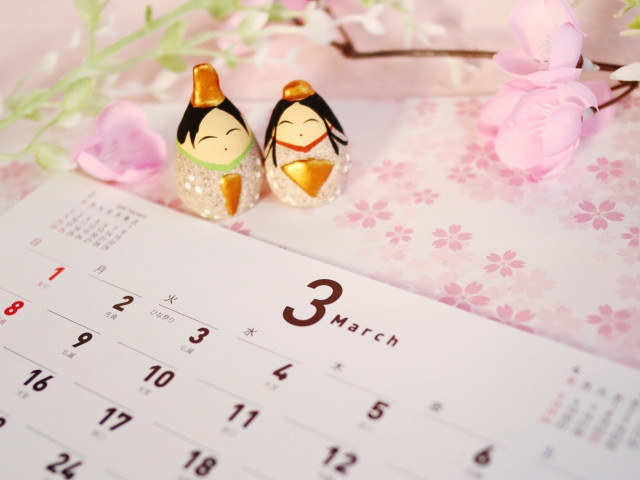
The following are traditional ways to look at and divide the Japanese calendar. Not many are used today in a wide scale manner, but they serve as the basis for many festivals and customs that we still observe in Japan today.
-
「二十四節気 Nijushi Sekki 」is the name for the 24 divisions of the solar year, adopted from China. The 24 sections correlate with the seasons and nature. Although most people don’t know or can’t remember all 24, some such as「秋分 shubun」 are known because it’s the name and timing of one of the public holidays.
-
「節句 Sekku」are 5 special days in the year that are seasonal festivals. While 3 of them are still widely celebrate today, they are no longer public holidays. The notable ones are
-
March 3 - 「桃の節句 Momo no Sekku」 now celebrated as Hinamatsuri or Girl’s Day
-
May 5 - 「菖蒲の節句 Tango no Sekku」now celebrated as Kodomo no Hi or Children’s Day
-
July 7 - 「笹の節句 Sasa no Sekku」now celebrated as Tanabata
-
-
「雑節 Zassetsu」are all seasonal days or periods that don’t fall under the above two. Notable ones still observed today include 「節分 Setsubun」in February and 「中元 chugen」in August.
Rokuyo
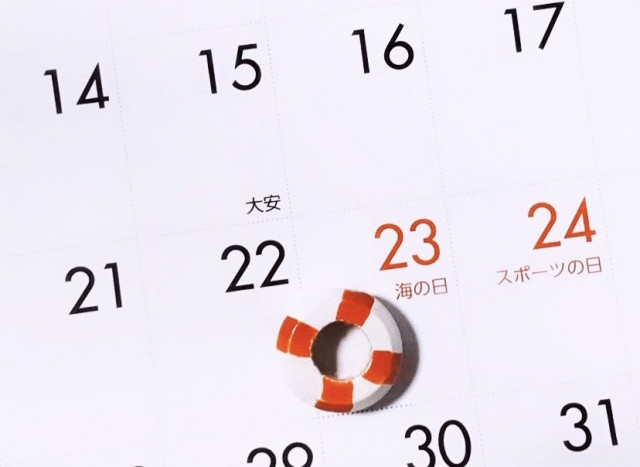
「六曜 Rokuyo」 is another traditional, rather unofficial calendar system that can still be found on the calendar today. You might see some kanji written next to the date on the calendar, especially in physical calendars. The kanji, one out of six different kinds, indicates the luck for that date.
It’s mostly based on superstition that is said to be heavily influenced by China. Although there is no scientific basis behind the Rokuyo days, many Japanese still believe in it, at least for planning big events rather than for daily life - so much that it’s included in many calendars still!
Some major examples include
-
「大安 Taian」- the most lucky of all. Huge events such as weddings, opening a business, etc. may be planned on these days.
-
「先勝 Sakigachi」 which implies that luck is felt strongly in the morning and slowly dwindles down as the day goes on while 「先負 Sakimake」is the opposite where luck is non-existent in the morning and gets stronger as the day goes by
-
「仏滅 Butsumetsu」 is the unluckiest day of all so people are cautioned to avoid bad luck. People who believe in Rokuyo will definitely not get married on those days.
To Close

We hope this was a comprehensive first look at the Japanese calendar and what you will see on it. There are many historical and cultural customs that come with Japanese holidays and the way the calendar is formed, and we hope this helps you enjoy them to the fullest!























